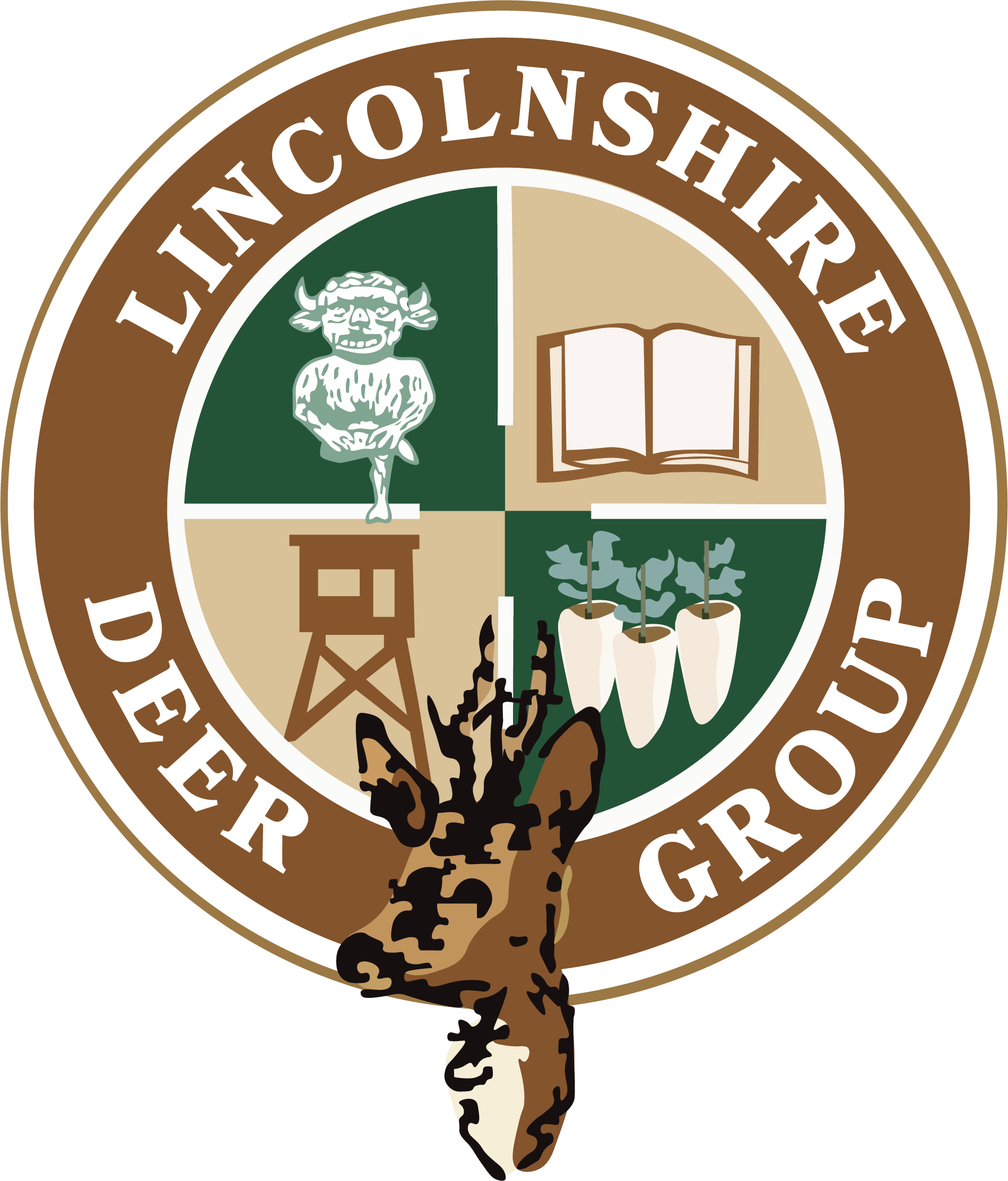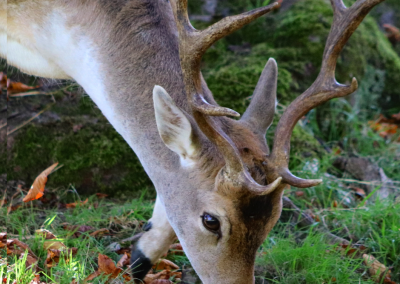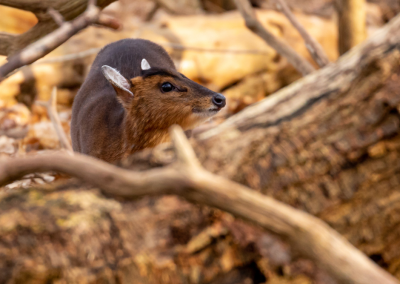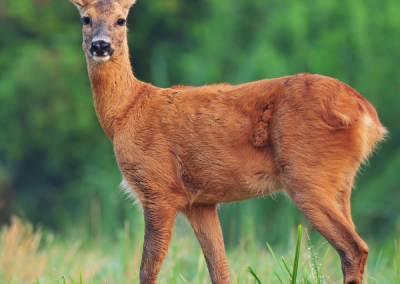Identifying our Deer
Research has shown that Lincolnshire could be the only county in England to have all six of our deer species living in the wild. However, there are three species of deer living widely in the county. It is most likely that you will see the marks in the ground they make and their dropping when you are out in the countryside or even in your garden. These marks are called slots. The slots vary dramatically depending on the different animals size.
Fallow Deer
HEIGHT – Up to 1m at shoulder, browses to 1.8m, frays to 80cm
PELAGE – Very variable. Types usually found:
Common: chestnut with white spots in summer: winter, dark brown and unspotted. All year, light-coloured area round tail, edged with black. Light tail with black stripe.
Black: all year, black shading to greyish brown. No light coloured tail patch or spots.
Menil: spots more distinct than common in summer with no black round rump patch or on tail. In winter, spots still clear, on daeker brown ground.
White: (not albino) fawns cream coloured, adults become pure white especially in winter. Dark eyes and nose. No spots.
VOICE – Does and fawns communicative, with high piping nasal cry. Does have gruff alarm bark. In the rut mature bucks groan and rhythmic belch.
IDENTIFICATION – Roe and Muntjac are much smaller with no spots. Fallow Bucks have flattened (palmated) antlers.
HABITAT – Ideally, deciduous or mixed woodland interspersed with farmland. Plantations at thicket stage usually avoided.
BREEDING – All year round 1-2 fawns each year.
Muntjac Deer
HEIGHT – Up to 50cm at shoulder, browses to 1.1m, frays to 40cm.
PELAGE – Summer: bright chestnut; chin throat and underside tail white; no spots. Winter: deep brown to grey.
VOICE – A harsh persistent yapping bark often continued for many minutes.
IDENTIFICATION – Distinguish from Roe by typical hunched stance. Long tail, short legs. Muntjac bucks have short antlers up to 15cm(6in) on long pedicles.
HABITAT – Thick undergrowth.
BREEDING – All year round 1-2 fawns each year.
ORIGIN – Introduced to Bedfordshire in early 1900s from China.
DIET – Bramble, herbs, nuts and fruits, coppice shoots, flowers.
HABITS – Solitary, in dense woodland cover. Often feeds in gardens. Damages trees, farm crops, woodland shrubs and ground flora
Roe Deer
HEIGHT – Up to 75cm at shoulder, browses to 1.1m, frays to 50cm
PELAGE – Summer: bright red-brown; pale below; no spots; rump patch lemon yellow or buff to white; nose black; chin white; no visible tail. Winter: dark brown to grey; thicker; rump white, hairs erectile on alarm; sometimes white patches on throat.
VOICE – Both sexes bark like a small dog in alarm or challenge. Barking may continue for up to a minute but not prolonged like Muntjac.
IDENTIFICATION – Distinguish from Muntjac by upright stance, long pointed ears, no visible tail. Roebucks typically have six pointed antlers.
HABITAT – Woodland, preferably with open patches.
BREEDING – One or two kids each year.
ORIGIN – Native.
DIET – Herbs, bramble, woody browse, grass, crops.
HABITS – Solitary or in small groups in woodland. Sometimes feeds in fields. Often damages trees, sometimes arable crops.
Not sure what species of deer you might have spotted. Head ot the British Deer Society website for your Free UK Deer Guide.
%
Fallow Deer
%
Muntjac Deer
%



